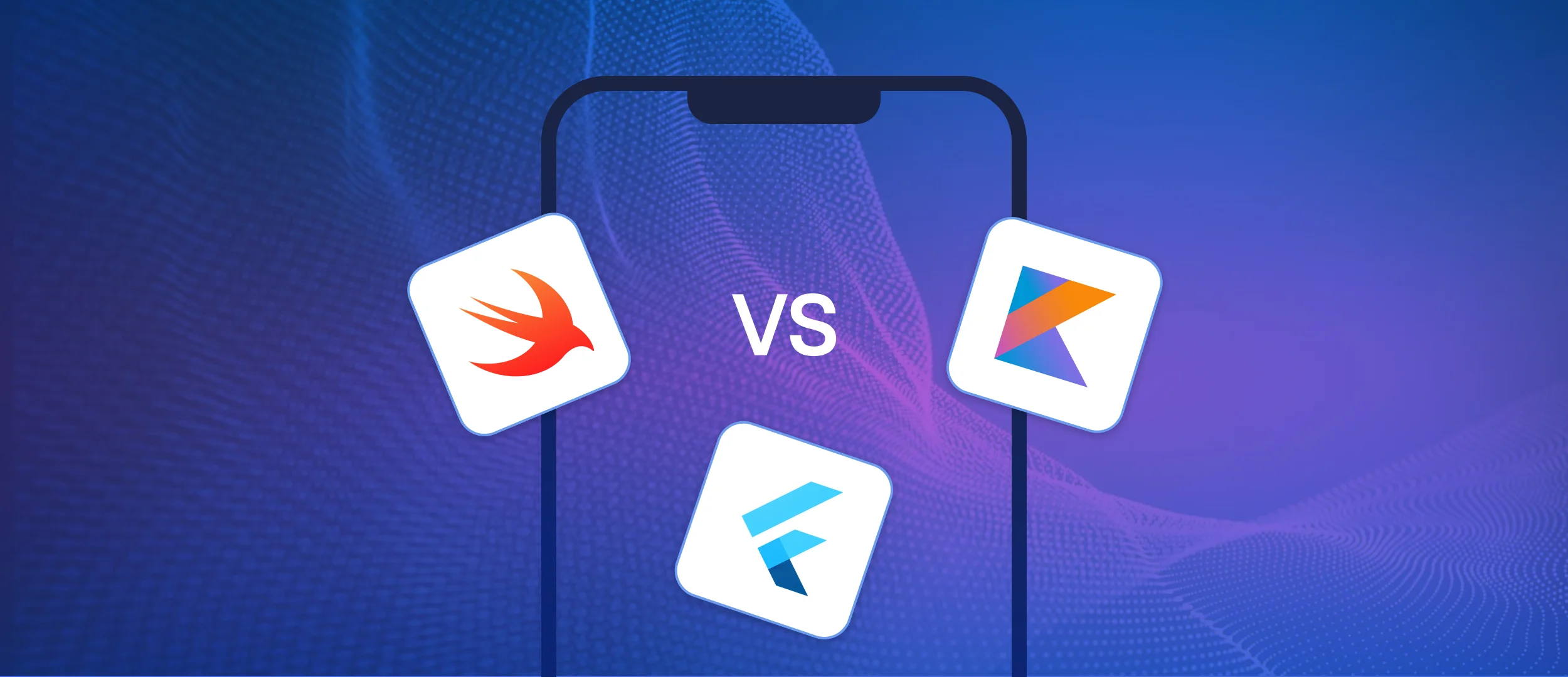
Contemporary language learning is increasingly disassociating from classrooms, teachers, and books. A great number of language-learning apps were developed before the coronavirus. However, the pandemic contributed to the unprecedented growth of e-learning app development, particularly to language-learning apps creation.
At present, mobile applications are one of the default formats users expect to study a language on the go, at any place and time.
In February 2022, the leading language learning applications generated revenue of about US $27 million. The market leader, Duolingo, generated almost half of the total US $13.38 million U.S. dollars.
In January 2024, Duolingo tripled this result and generated roughly US $37.8 million. The app proved to be the most popular language-learning mobile solution worldwide with over 16.2 million monthly downloads, followed in revenue by Babbel, US $ 6.6 million, and in downloads by LingoKids - 1.88 million.
What Are Language Learning Apps?
Language learning apps are software solutions that facilitate studying a language on portable devices and PCs. Computer-based resources are utilized to teach, train, and assess lingo material. No matter what language a user picks up to study, an app can help build a vocabulary, master grammar material, and improve understanding. It helps to comprehend not only a language but also the country’s culture and traditions.
E-learning solutions make learning interesting and engaging through accessibility, fun features, peer-reviewed feedback, and gamification.
How Do Language Learning Apps Work?
Duolingo has reached unprecedented popularity in terms of revenue and number of users. Let’s see how to make a language-learning app work effectively.
Exercise-centric practice
Duolingo app focuses on exercise-centric routines, presenting vocabulary, grammar, and language logic. Through repetitive words and grammar constructions in diverse combinations in various exercises, the learners practice keywords and phrases in context. As a result, the material becomes well-soaked into the mind, understood, and automated in usage.
Multiform content: images, animations, audios, videos
Multimedia content influences diverse sensory canals, and a user digests information at different levels. A user sees (reads) the word, hears it, reads the translation, and sees the picture, so at least two channels are used. Then they have also to pronounce it in another exercise and get feedback with a merry animation on whether the word sounds correct or not. While videos are rarely used in Duolingo, the idea is the same - provide learning through context and not with direct rules and instructions.
Books and articles
Content for reading in the targeted language is a must in building a language learning app. Such content boosts the users' confidence in their acquired skills. The content should be relevant and improve the knowledge that has been acquired. Consider fiction and non-fiction formats adapted to the level of average learners when developing an app for language learning.
Chatbots and AI-based learning
Chatbots and ChatGPT in particular, are good options to provide in-depth explanations of diverging grammatical and linguistic rules. A user can enter a role-play and learn more about the language-related context through communication with a chatbot.
Individual approach is valued nowadays. AI is the secret ingredient that can analyze vast amounts of data, so using the right algorithms for user-activities analysis, you can tailor a coherent learning program for each learner.
The industry of e-learning expects a revolution in the upcoming years in terms of chatbots and AI usage. Don’t wait till it becomes mainstream, become one of the pioneers.
Want a web app that does more?
Let's build a solution that's smart, sleek, and powerful.
Alina
Client Manager

Why Make Your Language App?
The modern world seems to become smaller, distances are not so frightening anymore. People travel not only for fun but also migrate to other countries.
So, learning languages is a burning issue nowadays more than ever. Leveraging innovative technologies, mobile solutions have the potential to disrupt traditional education methods. they can make everyday lessons more enjoyable, personalized, and efficient.
The key reasons to create a language learning app for you may become the following:
- To create an app for some specific language that is not very popular. At present, the existing solutions are mostly focused on popular languages. By creating a language-specific solution and delivering learning opportunities for people who speak less ‘mainstream’ languages, you can take a fruitful niche.
- To close the concerns of the existing software. There are spots even on the sun, and the Duolingo that is way ahead of the field also has downsides. Some users dislike the nonsensical texts it provides. Creating an innovative solution that will close such issues may bring you a large appreciative audience.
- To create something unique and outstanding in the market of language learning. Duolingo has driven the cross with its game-centric approach focused on short tasks. This is quite a supportive way to keep users motivated. It differs from traditional methods of learning that add up tension to the already tense schedules of the students. Offer your own unique and supportive approach to different user categories and benefit!
- To better see the perspective, let’s turn our eyes to the global language teaching market once again.
Global Foreign Language Teaching Market
The outbreak of the COVID-19 pandemic gave a boost to online learning. Closed in their homes, people needed to be occupied. Improving foreign language skills was a good option. Lots of people lost their jobs, however, got the chance to enter the foreign jobs market remotely. At the same time, people kept dreaming of traveling, and online language learning applications came in available, low-priced, and convenient.
Online solutions allow to start learning right away without a teacher. A user does not need to look for a tutor, agree on the timetable, and buy books for their studies. 2020 was a rough time for language schools and universities that were not present online. However, those who managed to be quick in creating software solutions attracted new students with free courses. Many of the “pandemic learners” keep studying.
Speaking about the Global Market for Online Language Learning, we can not but mention the tremendous CAGR of 18.1% forecasted for the period 2024-2030. By 2030 it’s expected to exceed US $37400 million. We guess it’s a good chance to carve out this niche for the coming years. So, let’s check how to create a language learning app.
How to Make a Language Learning App
We are going to describe the process of language learning software development in 9 steps, some of which can run simultaneously. An expert team always knows how to build a language learning app and optimize the process and the product. Do not think you need to be the Jack-of-all-trades. All you need is to choose an experienced vendor that will take care of all the procedures. But the concept is still your responsibility.
Decide on the desired app's concept
The concept of the application defines its functionality, appearance, and the way it will interact with the users. So, work out the app’s concept and make sure you have a clear vision of it. Then describe it in a small statement with the design details mentioned. It will help you figure the solution out better and present it to the development team.
Perform a business analysis
Business analysis is a part of the discovery phase, which helps the software development team assess the app requirements and decide on the possibility of their implementation. It also includes a detailed market analysis, competitor research, and business goals definition. The relevance of the concept is checked and functional details feasibility is verified. So this step is dedicated to figuring out the best solution and it’s the best implementation.
Define the feature set
The feature list is best created together with the developers. It’s vital not to overburden the users with too many features. The puzzling app experience makes learners abandon it. To save time and money, you can start with an MVP. It will help you get feedback from real users and verify if you are going in the right direction.
Consider integrating the most up-to-date technologies into your app. Conversational assistants, chatbots, AR/VR, and AI-powered functionality attract and engage users, however, stick to the simplicity. Duolingo can be a good benchmark here because it combines a simple interface and innovative AI-powered features.
Choose the technology stack
This is the stage when the technical team evaluates the tools to choose and resources to utilize for your idea implementation.
The tech stack should be defined based on target audience preferences in terms of devices. 80% of users learn on smartphones and 57% use multiple devices. So, a cross-platform solution is preferable, consider also a web version. We can talk long about Apple’s Human Interface Guidelines and Android Architecture Components and spam you with terms and names of frameworks and technologies. But to craft a well-thought web application trust an expert development team. They will prompt the best tech solutions to your concept and think about your app's modular nature and scalability in advance — a dedicated development team in charge of API integrations, cloud storage, microservices, and more.
Create a design for an application
The app should be convenient and intuitively clear to the users. It is achieved through a design that supports functional and external consistency. External consistency means that the app has similar interfaces on the mobile, tablet, and laptop. Functional consistency is manifested through a similar work of all the interactive elements within the app.
Study the best practices of the other applications, use your own intuition, and place the most important content and features on the top. Keep in mind that everything displayed on the screen should be there for a reason and lead the users the way of learning prepared for them.
Create basic content
When tech details and structural blocks of your language-learning app become clear-cut, start filling it with content. This can be done simultaneously with design creation. Make sure your content is correct, relevant, engaging, and up-to-date. Enlist the support of professional teachers and educational guideline developers to avoid mistakes in materials and methodology.
To provide your learners with the best results, you should cover all 4 language competencies: reading, listening, writing, and speaking. So, make your app a one-stop-shop for training all 4 skills.
Develop the app
MVP development is reasonable to start with, but the choice is up to you. Based on the agreed design details and tech stack, front-end development can be started. The back-end should also be built to support all the processes that run behind the screens. The complexity of this stage is determined by the project complexity and platform chosen for its realization.
Test your app
Testing and quality assurance are necessary to identify the application’s weak points and spot the bugs. If you start with MVP, choose the focus group and test the product. So, you can see all its downsides before the release of the full-fledged version.
The right software testing approach will help you launch a bug-free stable-working app. Consider functional and non-functional testing and follow the best practices of QA to provide your users with a software solution of superior quality.
Begin marketing and advertising
A bare creation of the language learning app is not enough to succeed. You should promote it to attract and engage the audience. Consider getting timely marketing support on the part of the professional team. The marketing campaign can start before the development is finished. It will make your solution long-awaited for users.
Consider creating a landing page, using social media, starting a blog or guest posting as well as advertising by influencers, offering promos, discounts, and coupons. Work on the App Store’s and Google Play’s description SEO optimization. Stfalcon, by the way, does it for our clients, to relieve them from the nuances we are well aware of due to our many years of practice.
Let’s now look in detail at the major features that may help your language-learning app become successful.
Must-Have Features for Creating a Language App
Sometimes there is no point in reinventing the wheel and language learning app creators have already developed the perfect feature set.
Without excessive details, we are going to mention the most important ones:
Simple sign-in. The user should get into your app without any hassle or problem. So give them as many options as possible or integrate your app with social networks and simplify the possess to the maximum.
Regular assessments. Offer regular checkpoints at the end of every lesson, topic, and section. It challenges the learners and motivates them.
Progress tracking dashboard. Integrating it, you allow the learners to monitor their performance and progress. The analytical tools, like statistics, diagrams, percentage of lessons passed, skills and words mastered, and so on support the users' interest and thrill of the race.
Gamification. Duolingo product manager admits that the international success of their app is based on well-built gamification functionality. In-app currency, badges, leaderboards, levels, gems, and crowns, or exploring new planets increase engagement and motivation to compete, sometimes even for a chance to win something valuable - a week of the free Premium, for instance.
Microlearning makes learning easy, short and focused tasks improve focus and result in long-term retention by up to 80%.
Built-in support facilitates getting timely and relevant tips to the users directly from the interface. It may be translations of words and phrases, dictionary articles, or integrated tips. However, remember the golden rule - not to overload the users. Make sure these features are not intrusive.
Variety of Content and Activities is the key to user engagement and loyalty. Remember to work on all 4 language skills, and diversify the tasks and their format.
Community creates a team environment. When you are not alone, it's easier to follow your way. So, creating a platform for user communication is an idea that deserves your attention. Or you can use the power of social media networks that already exist to create community.
Chatbot tutors that a user can speak to and consult in case of difficulty or confusion will make them feel cared for personally. Now, it’s a valuable feature and a highly appreciated trend in custom software development.
We will skip a detailed description of such features as push notifications, offline mode, and online payment integration because they are nowadays common for all app types. Challenges that you may face during the language learning app building are much more important, so we proceed to look into this aspect.
Challenges of language learning applications and their solutions
Language learning app development is no small undertaking. To successfully cope with the challenges on the way, you should be well-prepared. Let's name a few.
Student motivation
Lack of student drive is what you should be aware of. Be ready to support your learners’ continuous efforts. Think of the ways to boost their motivation with variable content, gamification, progress dashboards, and whatever occurs in your mind.
Engaging all linguistic skills
Keep the 5 main skills always in focus. It may be easy to create exercises on vocabulary, grammar, and audio perception, but reading and writing are difficult to incorporate effectively, if there is no real tutor. So you may consider adding reading material. Books or articles and a chatbot to check the correctness of written texts will do.
Preserving knowledge
Focus on the larger picture. The temptation to stick to bite-sized lessons is great, but they do not present the language structure in full and are easily forgotten. Add up some introductory theories and put the learners into the context.
A small number of languages covered
Most applications have language integration problems because they focus on the mainstream languages. However, those looking for rare languages often need to study English first because of the language barrier. Consider using AI resources to create your courses in non-mainstream languages.
How Much Does It Cost to Create a Language App?
Every aspect of your language-learning app influences the price, so the answer can not be given right here, right now. It’s only accurate project estimation that can give you an answer.
The type of app, its complexity, tech stack, integrations, and the level of professionals in the development team, along with the type of cooperation matter.
A simple solution may start from US $50,000 with around US $ 15,000 for an MVP.
What’s more, you need to monetize your app. Depending on the monetization strategy you choose, the development team will have to implement certain features. Let’s look closer at the monetization options.
Best Practices for Monetizing Your Language Learning App
The key approaches to software monetizing are more or less similar. You should choose the ones that will work best for your educational service.
Freemium model
It’s one of the most popular models. Attracting the learners to use your language-learning app for free, you offer them premium subscriptions for unique functionality and content. You can also offer extensive features to users for watching advertisements. This is a win-win strategy for both sides.
In-app advertising
You can get significant funds from advertisers eager to showcase their products. At the same time, you can offer your users a premium to remove the ads for a fee.
Subscriptions or one-time payment
Users deposit payments regularly for a certain period of learning - a month, a year, certain amount of lessons to pass. Another option is to purchase a whole course.
In-app shop
The integrated shop feature can offer to turn certain units, points, gems, or awards that a learner may collect into real purchases, or these units can also be bought.
How Long Does It Take to Build a Language App?
The development time is a question that is as vague as the one about the cost. Multifaceted factors influence it: project and design complexity, number and level of developers in the team, tech stack, and resources available.
You can expect several months for an MVP, and up to a year for a full-featured application. Bear also in mind that it takes years of continuous development to craft a product, like Duolingo. It is being constantly updated to keep the leadership.
How Can Stfalcon Help You?
E-learning applications for clients from different countries are a part of Stfalcon’s portfolio. We developed a mobile app that enables users to study and improve their qualifications through video content with relevant certificates provided by download upon finishing the course.
Another case worth mentioning is an application for interactive teaching. The solution maintains video communication with the possibility of broadcasting an interactive presentation. The latter should be filled in real-time by a child.
They may write texts, color pictures, and watch videos - all synchronized with the teacher’s room. But Stfalcon's solution and initiative scaled the business. The company teaches several languages at present.
Conclusion
The language learning market is the one going to prosper in the next decade and revealing unbelievable opportunities to those who dare join it. Our company is your best vendor, due to our relevant expertise and cases in our portfolio. We know how to create language learning software that exceeds the expectations of the users and expands the business of our clients. No time to hesitate, contact Stfalcon today to start your journey and win the competition.
If you still have questions, check the ones most popular below and then contact us to discuss what’s on your mind.
FAQs about creating a language learning app
What is a language learning app?
A language learning app is a piece of software that facilitates studying a language on portable devices.
How long does it take to develop a language-learning app?
It takes several months to develop an MVP, up to a year to build a full-featured application and years to craft a product that stands out.
How much does it cost to develop a language-learning app?
A simple app development cost may start from US $50,000 with around US $15,000 for an MVP. Then the sky is the limit and the overall project budget depends on multiple factors.

 Read the full case study
Read the full case study
 Read the full case study
Read the full case study


